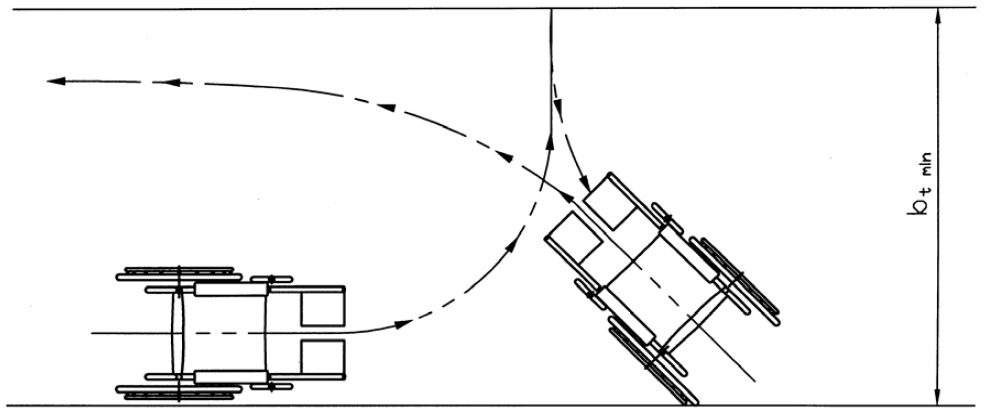Station 2-Three-Point Turn
A three-point turn is defined as a maneuver where the user starts at one edge of the shared use path, makes a forward turn toward the other side of the path, backs up while turning the device or vehicle in the other direction, and then makes a forward turn in the original direction to complete the 180-degree turn. Designers can use this information to select shared use path widths and, if necessary, build wider turnaround areas, so that users can execute U-turns within the confines of the path. To make a U-turn, bicyclists can dismount, pick up their bikes, turn them around, get back on, and ride off in the desired direction. This is often not possible for people with mobility impairments, or other users. Instead, they must be able to turn around in their manual or powered wheelchair, hand cycle, or other device within the confines of the traveled way. However, the turning radius of these devices can make it difficult or impossible for a user to make a U-turn on a narrow shared use path. For example, it was discovered in this research that a hand cyclist can require 4.5 m to 6 m (15 ft to 20 ft) to make a U-turn. In these situations, a multipoint turn is necessary.
At this station, active participants were asked to make a three-point turn and the width that they required was measured (figure 27).

(Illustration by Peter Axelson.)
Figure 27. Three-point turn.

User Comments/Questions
Add Comment/Question